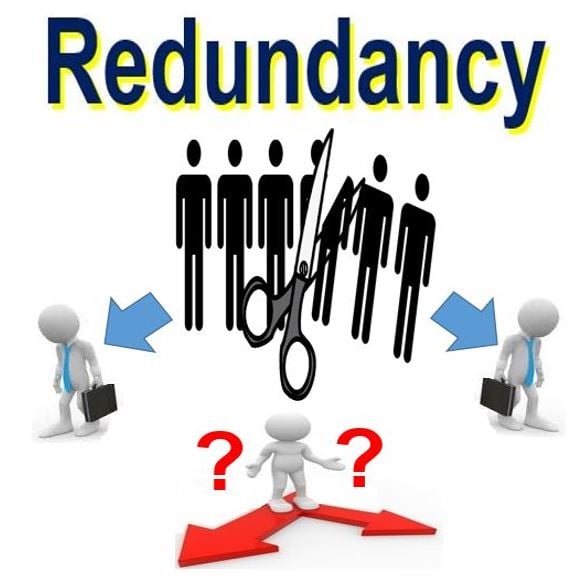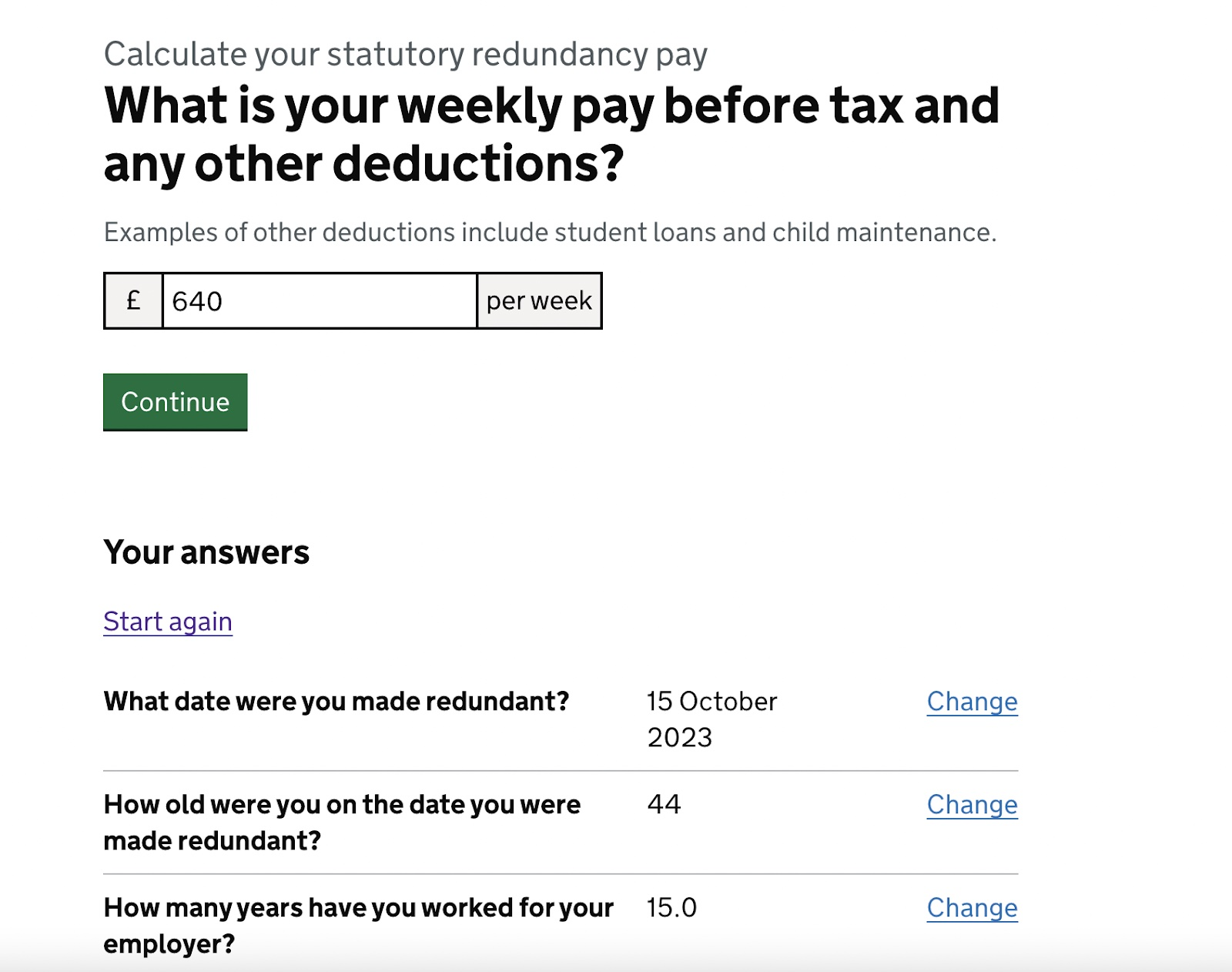Discussed: If a Company Goes Bust Who Pays Redundancy in the UK?
Discussed: If a Company Goes Bust Who Pays Redundancy in the UK?
Blog Article
Exploring the Interplay In Between Firm Redundancy and Organizational Flexibility for Future Development
In the vibrant landscape of today's business world, the intricate relationship between company redundancy and organizational adaptability arises as a crucial variable for sustained growth and success. Companies frequently face the challenge of striking a fragile equilibrium in between keeping a degree of redundancy to alleviate risks and fostering flexibility to react swiftly to the ever-evolving market needs. This delicate interaction holds the key to not just surviving in unstable times however additionally flourishing in the face of uncertainty. As we discover the diverse dimensions of this interaction, interesting understandings into exactly how organizations browse these intricacies to lead the way for future development await.
Relevance of Firm Redundancy
Company redundancy is a vital element that enhances business strength and alleviates operational threats. By integrating redundancy steps within the business framework, companies can much better hold up against unanticipated disruptions and changes in business atmosphere. Redundancy functions as a strategic barrier, enabling firms to adapt and respond properly to unanticipated challenges without compromising vital operations.
One trick element of the importance of company redundancy is its role in making certain connection during times of situation. When encountered with unexpected adjustments or emergency situations, redundant systems, resources, or employees can action in to preserve important features and avoid extensive disturbances. This connection not just safeguards the business's credibility and customer trust but additionally minimizes monetary losses and operational downtime.

Strategies for Organizational Adaptability

Another crucial technique is buying modern technology and facilities that can support versatility and scalability. Carrying out electronic devices, automation, and data analytics can simplify procedures, boost effectiveness, and offer beneficial insights for educated decision-making. Furthermore, producing versatile business structures that permit fast adjustments to market characteristics and customer requirements is important for remaining competitive in a rapidly evolving setting. By proactively recognizing potential interruptions and possibilities, companies can proactively grow and adjust in an ever-changing service landscape.
Balancing Redundancy and Versatility
Attaining a harmonious balance between functional redundancy and business flexibility is extremely important in browsing the intricacies of a dynamic company atmosphere. Redundancy within a firm offers a safeguard, making sure continuity and security in procedures. Nevertheless, an extra of redundancy can lead to inadequacies and hinder adaptability to transforming market conditions. On the various other hand, organizational flexibility enables companies to respond without delay to outside disturbances and take brand-new opportunities. Striking the appropriate equilibrium between redundancy and flexibility is a delicate process that calls for a deep understanding of the organization's objectives, industry dynamics, and threat tolerance.
To achieve this balance, companies require to carry out regular evaluations of their procedures to identify locations where redundancy is essential for danger mitigation and where versatility can drive advancement and development. Carrying out versatile frameworks, promoting a society of constant discovering and enhancement, and motivating open communication across all levels of the company are vital approaches to integrate redundancy and flexibility successfully. By lining home up these two vital aspects, companies can position themselves for lasting development and success in an ever-changing service landscape.
Study on Adaptation Success
In examining circumstances of effective organizational adjustment, it comes to be obvious that the interplay in between functional redundancy and versatility is a defining variable in forming resilient organizations. One engaging situation study is that of Netflix. Originally a DVD rental service, Netflix demonstrated exceptional versatility by transitioning into a streaming system when digitalization interrupted the industry. By purposefully buying modern technology and material creation, Netflix not just flourished yet made it through in a swiftly progressing market. Another standout instance is Amazon. Starting as an on the internet bookstore, Amazon constantly adapted its service model, broadening right into diverse fields such as cloud computing and fabricated intelligence. This adaptability allowed Amazon to remain in advance of competitors and fulfill changing consumer needs. Lastly, Adobe supplies a noteworthy picture of effective adaptation. The business changed from selling software application licenses to a subscription-based version, guaranteeing persisting revenue streams and improved client involvement. These case research studies emphasize the significance of visit homepage operational redundancy paired with business adaptability in promoting long-lasting development and competition.
Building Resilience for Future Development
Structure strength for future development calls for a critical placement of functional procedures with market dynamics and emerging trends. Companies must adjust to transforming settings by promoting a culture of versatility, development, and continuous enhancement. Durability involves not just recovering from obstacles but also proactively preparing for future challenges. One essential element of building strength is spending in durable risk administration approaches to alleviate potential disruptions. This consists of situation planning, expanding supply chains, pop over to this site and establishing contingency prepare for different contingencies (who pays redundancy money).
Furthermore, cultivating strong partnerships with stakeholders, such as clients, staff members, vendors, and the community, is necessary for weathering uncertainties and keeping trust and assistance throughout rough times. Reliable communication and openness play a vital function in structure resilience, as they assist straighten expectations and assist in cooperation in navigating unpredictabilities.
In addition, organizations need to focus on learning and advancement efforts to upskill staff members and equip them with the required devices to adjust to changing situations. By buying their labor force, firms can enhance their versatility and agility, inevitably reinforcing their resilience for sustainable future growth.
Final Thought

In the dynamic landscape of today's service world, the complex relationship between firm redundancy and organizational flexibility emerges as a vital factor for sustained development and success. Companies commonly face the difficulty of striking a fragile balance between keeping a degree of redundancy to reduce threats and fostering versatility to react promptly to the ever-evolving market demands.To accomplish this equilibrium, firms need to carry out regular assessments of their operations to determine locations where redundancy is essential for risk mitigation and where versatility can drive technology and growth.In conclusion, the interplay in between firm redundancy and business adaptability is essential for future growth. Structure strength via a mix of redundancy and adaptability will guarantee that business are prepared for the difficulties of the future.
Report this page